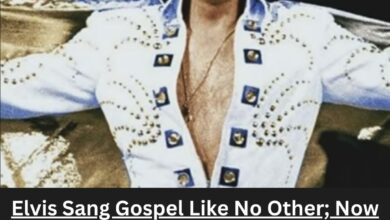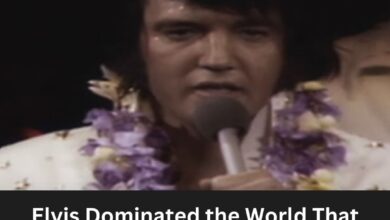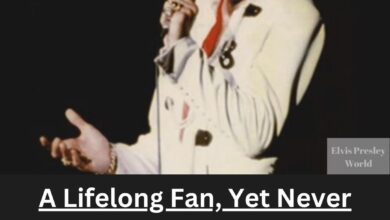Wow, This Feels Like A Dream! The Sky’s Colors, The Setting, His Outfit, And His Vibe Are All So Unbelievable
Elvis Presley’s first concert in Hawaii marked a significant moment in the singer’s career as well as in the history of entertainment in the islands. By November 10, 1957, Elvis had already established himself as an icon of rock and roll with a large fanbase eager to witness his flamboyant performances. The anticipation surrounding this event was palpable, as many fans from Hawaii and the mainland were eager to see their idol live. The concert not only attracted local attendees but also many visitors who traveled specifically to see Elvis sing.
The choice of Honolulu Stadium as the venue was ideal, as it could accommodate a large audience, with more than 20,000 fans filling the seats. This concert was part of a larger benefit show titled the “Show of Stars,” which aimed to support the construction of a memorial honoring the sacrifices made during the Pearl Harbor attack in 1941. The significance of this cause was not lost on Elvis, who appreciated the opportunity to give back to a community that had faced such profound sorrow and loss. The event also marked a strengthening of ties between show business and important historical reminders, blending entertainment with remembrance.
During the concert, Elvis performed some of his biggest hits, thrilling the audience with renditions of “Heartbreak Hotel,” “Hound Dog,” and “All Shook Up.” These songs, which had defined his early career, showcased his unique blending of rhythm and blues with country influences, a style that would resonate with wide-ranging audiences. Moreover, he debuted the song “Don’t,” another testament to his musical prowess and ability to capture the spirit of the times. His performances were characterized by energetic stage presence, vocal range, and engaging charisma, leaving audiences in awe and further solidifying his place as a top entertainer of the era.
The concert’s success was not limited to the raw numbers of fans in attendance. It was also a financial triumph, raising over $50,000 for the Pearl Harbor memorial fund—a substantial amount in that era, reflecting the community’s deep commitment to honoring its past. This accomplishment demonstrated the power of celebrity in mobilizing public support for important causes, as well as the potential of music to bring people together for a shared purpose.
Elvis’s relationship with Hawaii did not end with that concert. Over the years, he returned to the islands multiple times, drawn not only by the natural beauty of Hawaii but also by the warm reception from its residents and his fans there. His affinity for the islands would later manifest in film projects, most notably the 1961 movie “Blue Hawaii.” This film capitalized on the idyllic Hawaiian setting and further ingrained Elvis into the cultural fabric of the islands, creating an association between the star and the beauty of Hawaiian landscapes.
The impact of Elvis’s time in Hawaii extended beyond entertainment; it helped shape the perception of Hawaii as a desirable vacation destination for mainland Americans. His movies and music promoted Hawaiian tourism, bringing increased attention and visitors to the islands. This phenomenon was a significant part of the larger trend during the mid-20th century when the United States was becoming more acquainted with the diverse cultures and natural wonders of its states, including those that had recently gained statehood, such as Hawaii in 1959.
Elvis’s concerts also played a role in inspiring a new generation of musicians and artists. The blend of sexual charisma, rhythmic sound, and cultural crossover that he embodied sparked creativity and encouragement in others, enabling the growth of the rock and roll genre. Artists who followed in his footsteps often drew inspiration from both his music and his daring public persona.
Moreover, the legacy of this concert and subsequent appearances contributed to a greater appreciation of live music events and benefit concerts in general. Elvis’s participation set a precedent that artists could utilize their influence for philanthropic purposes, inspiring future musicians to engage in similar endeavors. The spirit of giving back through performances has since become a tradition in the music industry, with major artists frequently holding benefit concerts for various causes.
Elvis Presley’s concerts in Hawaii remain a pivotal moment in both his career and the cultural history of the islands. He continues to be celebrated not only as a musical legend but also as a significant figure who intertwined the power of entertainment with community support and remembrance. The echoes of his time in Hawaii resonate today, reminding us of the capacity of music to unite, inspire, and uplift, especially during challenging times. His journeys and performances in the islands further emphasized the importance of cultural exchange and the enduring legacy of rock and roll as a transformative force in popular culture.



